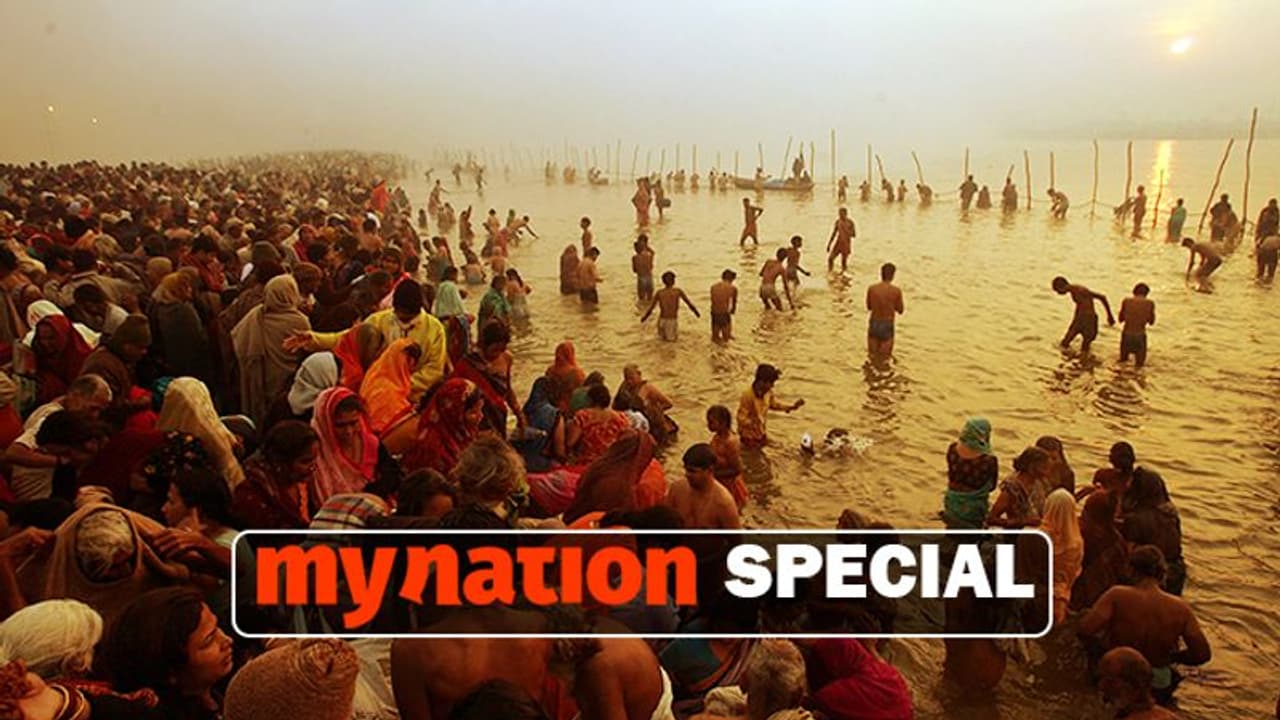While RSS affiliate Sanskar Bharati made a provision to encourage the north-eastern states to participate in the Kumbh Mela, under the Ganga Manuhar programme, the holy water of the Ganges was carried to rivers of different regions of the country and bring back their waters to Prayagraj
Prayagraj/New Delhi: While the world acclaimed religious congregation of Kumbh on the holy confluence of three rivers — Ganga, Yamuna and Saraswati — is the amalgamation of lakhs of devotees, the Rashtriya Swayamsevak Sangh (RSS)-affiliated Sanskar Bharati has turned this commingling to foster national unity and Hindu consolidation across the nation.
Northeast takes the holy plunge
The RSS affiliate, pracharak and one of the organisers Ved Prakash told MyNation, has also made a provision for encouraging the north-eastern states of India to participate in the Kumbh Mela.
“The Kumbh so far has been seen as an essentially north Indian religious congregation but, this time around, we have made arrangements for encouraging north eastern states to participate. We have also arranged for a separate enclosure for people coming in from this part of India,” Prakash said.
According to the RSS pracharak, over 500 artistes from north-eastern states of Nagaland, Mizoram, Meghalaya and Sikkim have been camping every day on an average.
“Artistes have come also from Assam. We are happy that we are seeing participation from all districts of Nagaland and from all the 16 main tribes of the state. Most of the participants from the Northeast are women. Most of the artistes who took a holy dip in the sangam are Christians,” said Prakash.
“We have always believed that, while we might belong to different religions and to that extent have different modes of worship, the culture of India is common and that is what unites us. Kumbh and the sangam represent that common culture of India,” Prakash added.
Thousands of more “devotees of the Indian culture” from north-east India, Prakash said, are expected at the Kumbh Mela by the time it ended in February.
Ganga unites India
Under the aegis of the ‘Ganga Manuhar’ programme, Sanskar Bharati organised a programme to take the holy water of Ganges to most of the local rivers across all the states of India.
The messengers of this call for unity are local artistes from various states. These artistes not only took the water to the banks of the rivers passing through their respective regions to be poured into them but thereafter took the waters from those rivers back to Prayagraj to be united with the holy confluence or sangam.
“Artistes came to Prayagraj and took the holy waters of the Ganga back to their own rivers. There they preached the idea of cultural as well as the geographical unity of the nation and made their people aware of the significance of the confluence and Kumbh. Then they took water from their respective rivers and came and poured them in Ganga at the sangam,” Prakash told MyNation.
According to Prakash, Sanskar Bharati sent Ganga water to 175 locations situated along rivers across India and received water back in Prayagraj from over 150 of these places.
